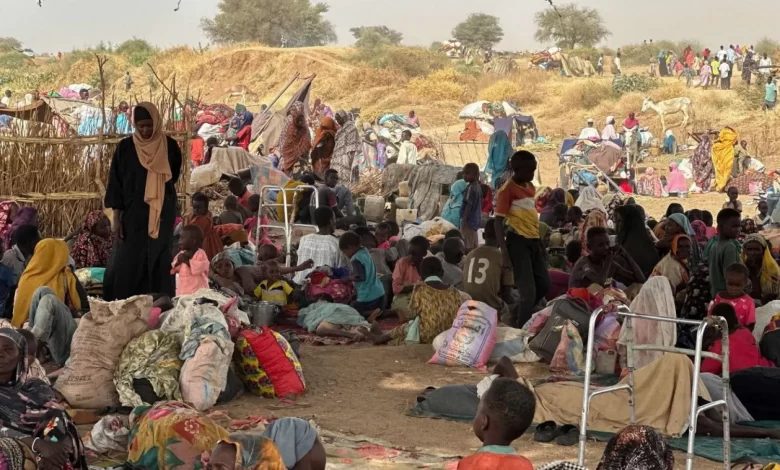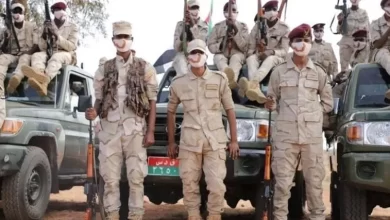Sudan’s War Enters Its Third Year with No Solution in Sight

Sudan Events – Agencies
Sudan’s war enters its third year today, with no clear resolution on the horizon, as both warring parties—the Sudanese Armed Forces and the Rapid Support Forces (RSF)—remain adamant about resolving the conflict through military means and refusing negotiations.
According to UN reports, the material losses are estimated at $200 billion, with human casualties reaching hundreds of thousands killed or wounded. More than 60% of the country’s infrastructure has been destroyed, and around 15 million people have been displaced, either internally or as refugees. The European Union has described the crisis as the worst of the 21st century, while the International Organization for Migration labeled it as the “world’s largest displacement catastrophe.”
Meanwhile, harrowing videos depicting executions, ethnic- and identity-based shootings are circulating widely. As the war is fought inside cities, the humanitarian and material toll has been immense.
Sudanese citizens look with cautious hope to the outcomes of an international conference being held in London today, with participation from foreign ministers of 20 countries, aiming to explore ways to end the bloody conflict.
As the war enters its third year, it grows more horrific by the day—if not by the hour. Field executions are rising, and horrifying footage of atrocities continues to emerge. Bullets are fired based on identity, ethnicity, or region. Anyone could be killed merely for opening their eyes or speaking a word. A bullet—or a blade—is always waiting.
The figures reveal a grim reality: What began as a military confrontation between the Sudanese Army and the RSF has quickly morphed into a nationwide war that spares no region—north, south, east, or west. Regardless of who dies, it is always the civilian who pays the price. Hospitals, schools, bridges, and public infrastructure are systematically destroyed.
The guns have not just targeted soldiers; they’ve been turned against innocent civilians. The armies are not fighting on traditional battlefields—this is urban warfare. Each side is entrenched in fortified positions while artillery shells and barrel bombs rain down on civilians. It is, as the UN says, a war on the people.
Trail of Destruction
UN and media reports estimate economic losses from the war at approximately $200 billion. Human casualties are in the hundreds of thousands, with about 60% of the country’s infrastructure destroyed. Nearly one-third of the population—roughly 42 million—has been displaced internally or as refugees. The European Union has called it the worst humanitarian disaster of the 21st century.
Despite recent gains by the Sudanese Army, no resolution appears imminent. The war has inflicted unprecedented destruction across all levels: over 60,000 people have been killed, with countless others injured or disabled. Nearly a third of the population has been displaced. The economy and infrastructure lie in ruins, and about half the population now lives below the poverty line. According to the UN, hunger threatens nearly 20 million people, and over 14 million have been forced to flee their homes or country.
RSF Atrocities
The RSF’s control over Khartoum and other cities in Al-Jazirah state was marked by brutal repression. Anyone seen as supporting the army was labeled a “remnant” and faced summary execution or imprisonment under inhumane conditions, often dying from torture, hunger, or thirst. The RSF has been accused of mass killings—starting in West Darfur with the cold-blooded murder of the state governor—and continued violent reprisals, especially in East Al-Jazirah after a key commander, Abu Aqla Kikel, defected to the army.
After the army reclaimed parts of Khartoum, horrifying videos emerged on social media showing emaciated survivors rescued from RSF prisons, with their skin clinging to their bones due to starvation and torture. Many reportedly died upon being fed, suffering from refeeding shock. One survivor recounted: “They crammed me and 25 others into a tiny room with a single bucket for waste. When it filled up, we had to sleep in our own filth. We were tortured physically and mentally every day.”
The army stated that RSF detainees were fed only small portions of cornmeal porridge without stew, twice a day, with limited water for drinking and hygiene. This led to infestations of lice and insects. Sleep was almost impossible due to overcrowding, unsanitary conditions, and psychological torment.
Collapse of the Industrial Sector
Sudanese economic advisor Abdul Azim Al-Amawi told Asharq Al-Awsat that the ongoing war has caused massive damage across political, social, and economic dimensions. Sudan has lost about 25% of its capital stock. Infrastructure—roads, airports, bridges, factories, and development projects—has been heavily damaged. Al-Amawi, Head of Market Research at Gulf-based “Aswaq Al-Mal,” noted that macroeconomic indicators have plummeted: GDP contraction has reached 37.5%, the budget deficit has soared to 9.1% of GDP, and inflation skyrocketed to 245% in the first year of the war.
He explained that Sudan’s economy is composed of 46.3% services, 32.7% agriculture, and 21% industry. The industrial sector is heavily concentrated in Khartoum (85%), where most factories have been destroyed—resulting in near-total industrial collapse.
Currency Devaluation
Al-Amawi also highlighted the collapse of the Sudanese pound, which depreciated by 74% in the war’s first year and 81% by 2024. By 2025, the exchange rate in the parallel market reached 2,107 pounds per US dollar. He concluded: “The ongoing war has devastated the economy, slashing government revenues by 85%. Sudan has effectively become a war economy, with an expanding unregulated shadow economy in many regions.”



